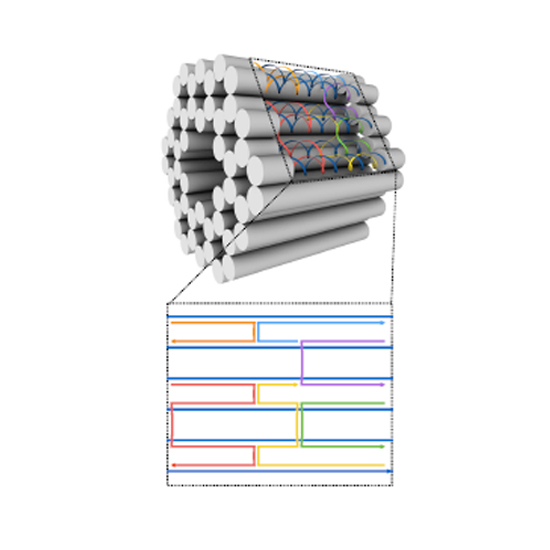Biotechnological mass production of DNA origami
06-Dec-2017
Nature, volume 552, pages 84–87, doi:10.1038/nature24650
Nature, online article
DNA nanotechnology, in particular DNA origami, enables the bottom-up self-assembly of micrometre-scale, three-dimensional structures with nanometre-precise features. These structures are customizable in that they can be site-specifically functionalized or constructed to exhibit machine-like or logic-gating behavio. Their use has been limited to applications that require only small amounts of material (of the order of micrograms), owing to the limitations of current production methods. But many proposed applications, for example as therapeutic agents or in complex materials, could be realized if more material could be used. In DNA origami, a nanostructure is assembled from a very long single-stranded scaffold molecule held in place by many short single-stranded staple oligonucleotides. Only the bacteriophage-derived scaffold molecules are amenable to scalable and efficient mass production; the shorter staple strands are obtained through costly solid-phase synthesis or enzymatic processes. Here we show that single strands of DNA of virtually arbitrary length and with virtually arbitrary sequences can be produced in a scalable and cost-efficient manner by using bacteriophages to generate single-stranded precursor DNA that contains target strand sequences interleaved with self-excising ‘cassettes’, with each cassette comprising two Zn2+-dependent DNA-cleaving DNA enzymes. We produce all of the necessary single strands of DNA for several DNA origami using shaker-flask cultures, and demonstrate end-to-end production of macroscopic amounts of a DNA origami nanorod in a litre-scale stirred-tank bioreactor. Our method is compatible with existing DNA origami design frameworks and retains the modularity and addressability of DNA origami objects that are necessary for implementing custom modifications using functional groups. With all of the production and purification steps amenable to scaling, we expect that our method will expand the scope of DNA nanotechnology in many areas of science and technology.











